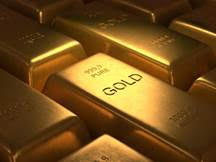Gold Demand In Q3 2017

Last week, the World Gold Council published a new edition of its quarterly report on gold demand. What does Gold Demand Trends Q2 2017 say about the demand for gold in the third quarter of 2017?
Gold Demand Declined In Q3
Gold demand in the third quarter of 2017 was 915 tons, a 6-percent decline from 973.7 in Q2 and a 9-percent drop from 1001.1 tons in Q3 2016. The negative headline was partially caused by a 28-percent reduction in investment demand. Although global holdings of gold-backed ETFs grew by almost 19 tons in the third quarter of the year, it was significantly less than last year (144.3 tons).
It seems that investors lacked a clear catalyst in Q3 as the price of gold stayed within the recent broad $1,200-1,300/oz. range for much of the quarter. As we wrote in the October edition of the market overview, gold prices in Q3 were mainly driven by U.S. monetary policy – the price of gold rose in July and August, as the probability of a Fed hike in December fell steadily, and it declined in September, when the market expectations of an interest rate raise at the end of the year reversed sharply.
Other Components
Jewelry demand declined 3 percent on an annual basis. Actually, Q3 2017 was the weakest third quarter in the 17-year WGC’s data series. Because consumers are price takers, not price setters, they do not drive the price of gold.
When it comes to other components of gold demand, bar and coin demand surged 17 percent year-over-year, but mainly due to the low base effect. Technology demand rose 2 percent annually, marking the fourth consecutive quarter of growth. Actually, year-to-date technology demand returned to growth after 6 years of decline, due to strong momentum in memory chip demand. The purchases of central banks soared 25 percent on an annual basis to 111 tons. As usually, the Central Bank of Russia was by far the largest purchaser.
Gold supply declined 2-percent due to a 6-percent contraction in recycling and 1-percent drop in mining production.
Conclusions
To sum up, the demand for gold declined 9 percent in the third quarter of 2017 on an annual basis. The decline was driven partially by a slowdown in investment on an annual basis. As always, we remind investors that the WGC data is not accurate as it treats gold as other commodities and does not take huge gold holdings into account. The price of gold is more affected by the decisions of gold holders, not by new supply or technology demand. Also, the WGC remains incorrigibly optimistic about gold demand, as it bets on the rebound in jewelry demand. However, gold prices are driven mainly by investment demand, not by consumer purchases. The Fed hike in December is already priced in gold, so the downside risk is limited, but the lack of downside risk may not be enough to pull gold prices out of the $1,200-1,300 range. Stay tuned!
Disclaimer: Please note that the aim of the above analysis is to discuss the likely long-term impact of the featured phenomenon on the price of gold and this analysis does not indicate (nor does it aim to do so) whether gold is likely to move higher or lower in the short- or medium term. In order to determine the latter, many additional factors need to be considered (i.e. sentiment, chart patterns, cycles, indicators, ratios, self-similar patterns and more) and we are taking them into account (and discussing the short- and medium-term outlook) in our trading alerts.
*********


















